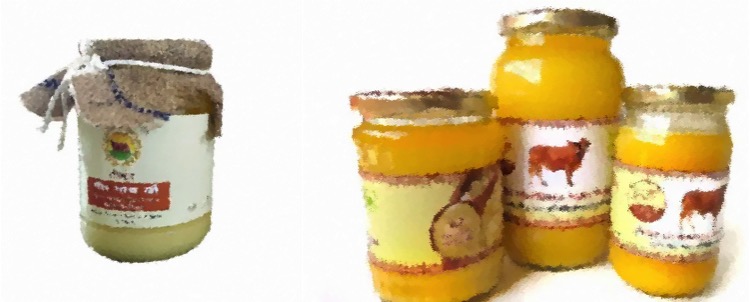A lot of what we consume, food or otherwise, is influenced by our perception of it, rather than by facts. According to Food Marketing and Technology magazine, an average food and drink company in the B2B space spends around 24 per cent of its revenue on marketing. For scale, the food and beverage industry accounts for 3 per cent of India’s GDP. Marketing is a double-edged sword. It introduces us to new products and steers us towards better consumption. But a well-targeted but misleading advertising campaign can negatively influence our decisions.
Ghee is an example. There is an even premium version of ghee called A2 milk ghee. The price of the A2 milk ghee can go up to almost ₹5,000 per litre. Although an outlier, even other prices are markedly higher than non-A2 ghee. What the marketers refer to as A2 ghee, is the ghee made from the milk of indigenous cows, sometimes also made by the traditional Bilona method of ghee-making rather than the industrial method.
Indigenous breeds give less milk and the Bilona process requires more milk to make the ghee. It has a higher cost of processing. The by-product buttermilk is sold for less than the skimmed milk by-product from industrial ghee processing. It is also tastier and better in terms of nutrition due to it containing more milk fat than industrially processed milk.
But all of these are characteristics of the Bilona process and not of A2 protein. The A2 tag in milk only refers to a specific protein made only by indigenous cows. Funnily enough, that protein isn’t even present in the final ghee product. Ghee is mostly made up of fats and micronutrients.
Tagging trends
Why that tag? Why not say this ghee is made from Gir Cow’s milk and by the Bilona method? The marketers know that premium products made for the elite sell better when they are backed by a scientific-sounding reason. In the case of A2 ghee, the claims come close to lying. The ghee might be made of A2 milk, but actual A2 protein is not present in the ghee. But A2 is a catchy and scientific-sounding tag, so slap that on with traditional words like Vedic, Bilona and Gir! Cover all consumer segments.
The next product is the hot new trend in young urban markets — plant-based milk alternatives. They’re higher priced, and they market themselves as a healthier and cruelty-free alternative to animal milk. The marketer’s claim is debatable on both counts.
Minimum content
FSSAI requires milk to be a mammary secretion. Many countries worldwide have certain ‘minimum content requirements’ for key nutrients like protein and milk solids for milk. Most of the alternatives are artificially fortified with micronutrients already present in animal milk and have added sugars.
Therefore, the regulations require them to label their products as milk alternatives and not as plant milk. These alternatives are good only in one case — they offer a viable alternative for lactose intolerant or other allergic people.
From a sustainability perspective, the plants, like almonds, also consume a lot of water. Almond Milk is the most popular alternative to animal milk. About 80 per cent of the world’s almonds are grown in California, a drought-prone state. There have also been cases of using child labour and bonded labour to process the ‘cruelty-free’ plant milk alternatives to keep the costs low. A better case for sustainability can always be made for locally produced buffalo milk.
You, as a consumer, still may prefer the A2 ghee or the soy latte. You like the taste of it or the texture it gives your food. It may be a healthier alternative for your system. It is not the consumption that is under scrutiny here. It is the marketing. A smart consumer’s choice, no matter what it is, is based on objective facts. Not gimmicky advertisement tactics that colour perceptions.



























